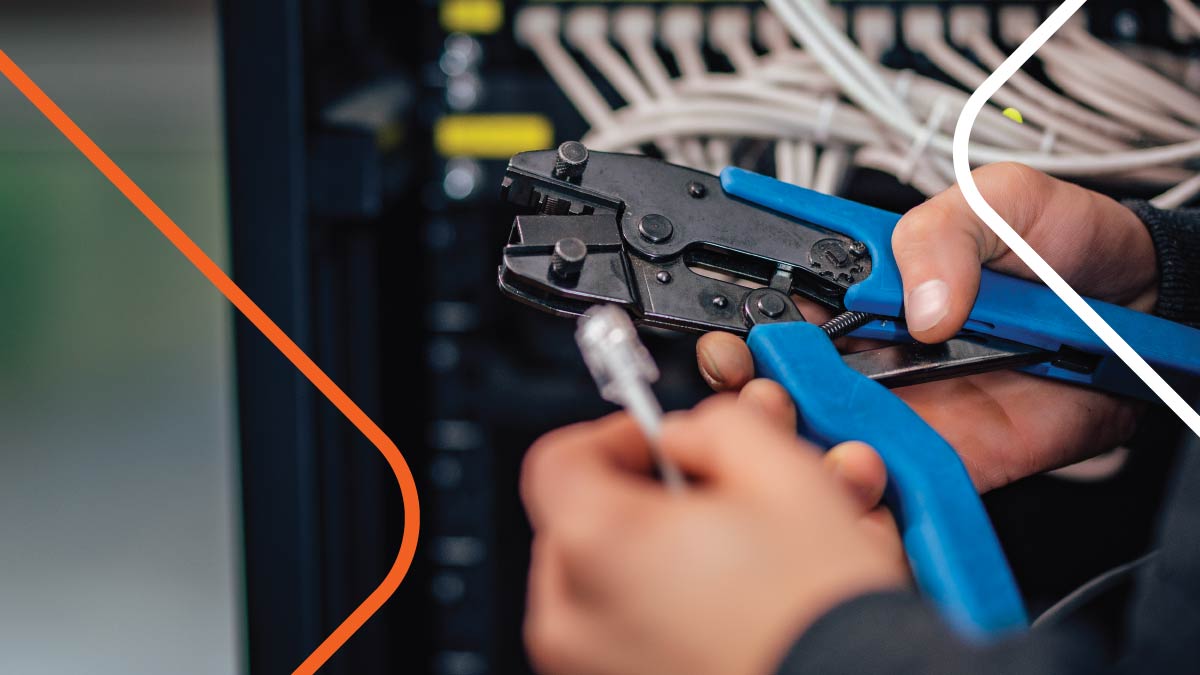
By Melissa Pfannenstiel, Senior Director of Product Marketing at Field Nation
The security market is experiencing accelerated demand for physical equipment installation and maintenance. This surge is fueled by technological advancements that facilitate faster and easier set-up, coupled with the decreasing cost of technology. For example, many companies are replacing legacy CCTV systems with newer, more cost-effective IP camera systems.
We’re also seeing an uptick in installs for retail environments. Brands are looking for ways to improve loss prevention and safety measures. According to the National Retail Federation, inventory shrinkage is a big problem—to the tune of $100 billion in losses each year.
Retail shrinkage is a complex number that includes several kinds of loss. “Partial shrink,” where customers don’t pay for all their items at self-checkout, has become more of an issue as retailers shift from traditional registers to self-checkout kiosks. However, external theft like this accounts for only 36% of the total shrinkage. Employee theft contributes to another estimated 29% of retailer losses. Deterrence and surveillance equipment are two main ways retailers can prevent shrink from these kinds of theft.
The education sector is also driving equipment installations. Schools and universities are looking for new ways to keep their campuses safe from external and internal threats. Many are turning to solutions like integrated access control and surveillance systems to help monitor student and visitor activity.
MSPs, OEMs, system integrators, and dealers in the field service sector have an opportunity to capitalize on this incredible market growth. However, doing so will require your company to rethink its labor strategy.
The Labor Challenge
Your company’s ability to meet market demand depends on its access to skilled labor in the field. That is a current challenge with low unemployment and ongoing skilled labor shortages.
While internal labor resources (employees) have their place, they come with added operational costs for health insurance and other benefits. Internal labor also makes it harder for your company to scale up or down or pivot to regions where demand is booming. Many technicians today prefer the flexibility of contracting, making it more difficult to find technicians to hire as internal labor.
The security market also comes with added complexities. Licensing requirements vary by state, county, and city. With no standardization, this can make expansion into new markets more challenging.
One way to mitigate licensing and labor challenges is with third parties. Depending on their size, they may have licensed labor across several states or large metropolitan areas. However, companies that rely solely on this labor strategy aren’t entirely out of the woods. What happens when the third party lacks availability or doesn’t cover an area you now want to serve? Or, what if the third party doesn’t hire a quality installer and your customer’s perception of the brand suffers?
Your company must evaluate these issues and risks to determine the right labor strategy. But before you do, there is one other option to consider.
Rethinking your labor mix
Adding on-demand labor is an effective way to enable growth where internal labor locks you in for a longer term; on-demand labor allows you to fill labor gaps immediately.
How do you access on-demand labor? Typically, a labor marketplace enables connection to independent contractors in your target geography with specific skills and the required licensing based on your scope of work. It also allows companies to define and post the work, vet and assign the right technician, and review and approve each work order, facilitating on-demand work in one place, with the ability to scale quickly and build relationships for future work.
In today’s economy, companies thrive by adopting a diversified labor strategy. By adopting a labor approach incorporating internal resources, third parties, and on-demand labor, you can leverage the strengths of each type of labor to fuel growth cost-effectively.
Benefits of on-demand labor
On-demand labor benefits companies across the board. Leadership can maximize profitability and protect margins by aligning work demand with an on-demand labor workforce. Sales will win more business, knowing they can cover any location with competitive pricing. Operations and finance departments can reduce management and paperwork by leveraging third-party marketplace software and payment systems.
When executed effectively, on-demand labor through a marketplace also improves outcomes. Payments don’t process until technicians complete the work to your specifications, reducing site revisits by as much as 40% compared with third parties*.
Furthermore, on-demand labor reduces costs by eliminating third-party margin stacks and giving you direct control over pay rates. On average, you can reduce labor costs by up to 20% versus third parties and 30% versus employees*.
Will this growth trend continue?
Even if net new demand slows down, the installed base of existing equipment is massive. Just maintaining what’s already there will keep labor demand high in the near term.
The good news is that demand for new equipment isn’t predicted to slow down. A research report from ASIS International and the Security Industry Association (SIA) found that the physical security equipment market is expected to grow 9% in 2024 to $60.1 billion. By 2026, the market will be worth $70 billion.
Rethinking the labor mix might be the key to tapping into this growth for MSPs, OEMs, system integrators, and dealers. With a diversified workforce, you can deploy the right skilled labor resources when and where you need them to deliver great outcomes.
This article was originally published on SDM Magazine.










